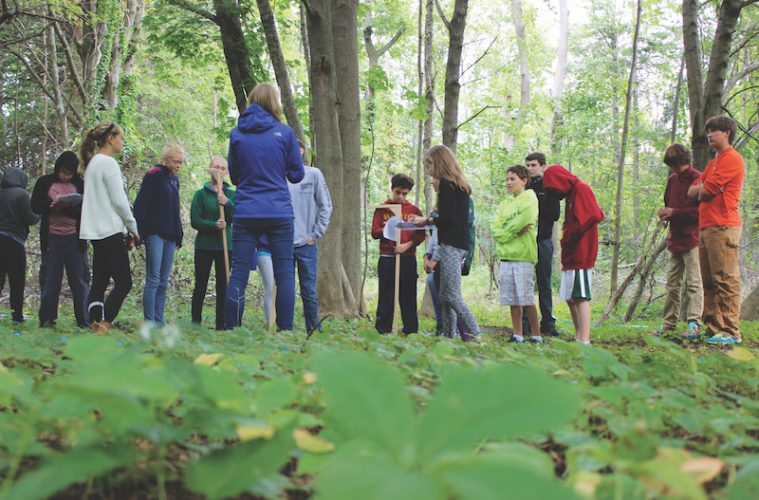The 23-acre campus at Glen Urquhart School in Beverly is mostly forest, dotted with the remains of an orchid farm, greenhouses, and outbuildings. The elegant decay, as the forest slowly reclaims the land, is of great interest to seventh grade science teacher Emilie Cushing, and it turns out it’s also of interest to researchers at Harvard University, who are examining the ways that forests grow and change over time in response to different environments and land use.
“The Glen Urquhart campus has a really interesting history,” Cushing says. ‘There are different structures, like a gazebo, that are falling apart but look really beautiful in the forest.”
The various uses of the land, and the way the wilderness is coming back, makes it an ideal site for Harvard University’s Forest Long Term Ecological Research (LTER) program, which uses student data to study how forests respond to human and natural disturbances. Cushing says the project, with its real-world implications, engages the kids in ways that hypothetical experiments don’t.
“Our students, who are just regular people, are able to collect real data that scientists are using,” Cushing says. “Students are outside, but they know it isn’t recess. I have to do very little redirecting.”
To enroll GUS in the program, Cushing attended training sessions at Harvard, and she is responsible for reporting the data, but her seventh grade students are involved in everything else, from marking off the plot of land to recording observations about the diameter of the tree trunks within and observing the canopy cover and wildlife. Since trees grow slowly, measurements are taken only every other year, so Cushing plans to mark out another plot, giving every seventh grade class the opportunity to participate in the data collection.
David Liebmann, who recently joined GUS as the new head of school, says the project is reflective of the school’s overall philosophy.
“By design, the natural world is a part of the students’ educational experience at GUS,” he says. “There’s not a separation between inside and outside, between classroom and landscape. That integration is really important for kids, and it makes perfect sense to me as an educator.”
That connection made a deep impression on GUS student Maya O’Connor, who participated in the study. “I usually feel the serenity of the woods, but I had never looked at the [forest] the way we did,” the 13-year-old says. “Now when I look around the GUS woods and campus, I notice the changes that have taken place over just the past 100 years.”
That balance of head and hands is one that GUS is constantly aiming for, Liebmann says. “Given the world in the 21st century, the reality of climate change and the pressing environmental concerns out there, it’s probably never been more important to get kids outside of the classroom.” ![]()
Glen Urquhart School

